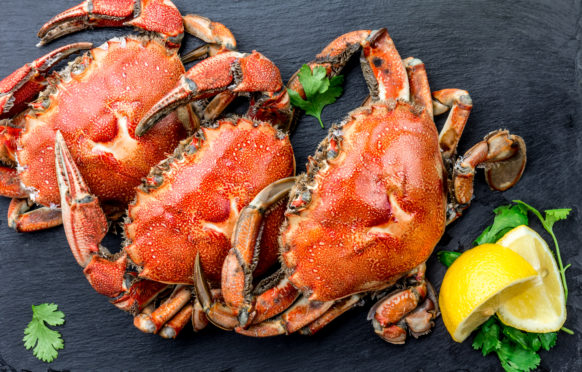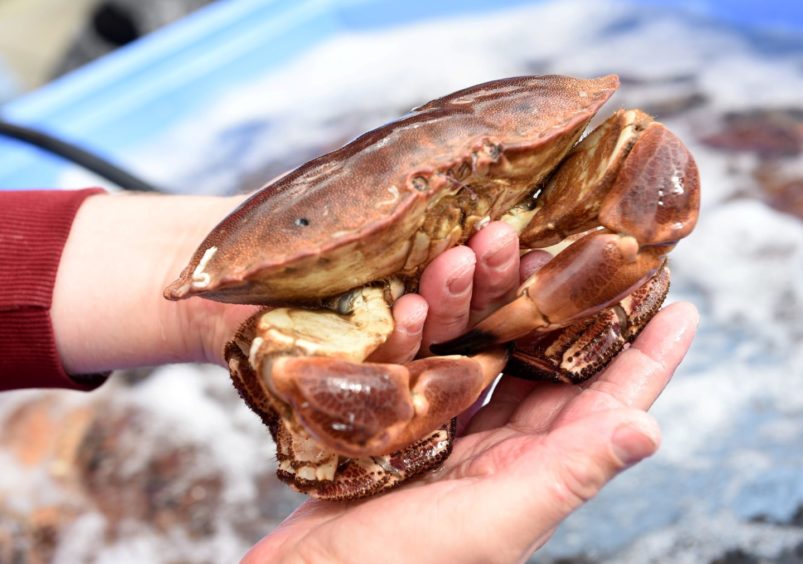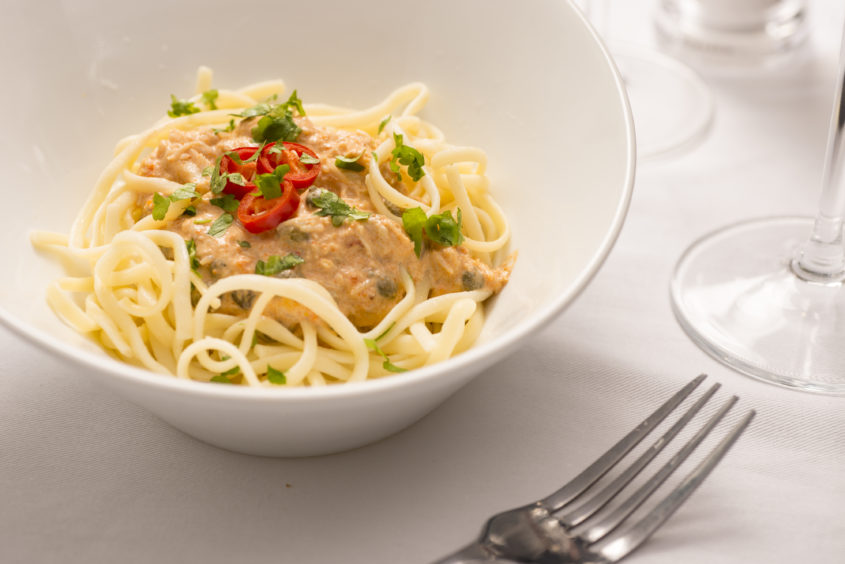Seafood is one thing that Scotland is certainly not in short supply of. With an abundance of it on our doorsteps all year round, crab is no exception.
It is perhaps one of the most meaty and versatile of the shellfish available to us. For the most part it is caught all year round, but from May, as crabs move into shallower water, they become more readily available.
Josh Talbot, who co-owns a creel fishing boat called Bon Ami, off the north-west coast of Scotland, goes out daily to catch shellfish, including crab.
He said: “You can fish crab all year round but the best time is when the shell is hardest and fullest of meat, which is usually around August to October time.
“But right through the winter you’ll get good crab, and into the spring crabs tend to cast their shell, so it goes quite soft and means it goes bad quicker than when the shell is harder over winter.
“Shallow waters on the east coast tend to attract much smaller crabs but they are often much meatier. On the west and north coast, we get much bigger crabs but they don’t have as big a meat ratio as the ones from the east.”
Errin Todd from Todd Fish Tech in Dunfermline, who make the technology that keep crabs alive between creel and plate, also agrees that crab can be eaten at any time of year.
“A lot of our crab is actually exported to the Far East. In China and Hong Kong, for example, they absolutely love our crab. But now they’ve lost these huge markets so many of the fishermen are looking for ways to diversify and sell locally.
“When the sea warms up, usually about May, the crabs move into shallower waters, meaning it’s easier for the creel boats to catch them. So there are more available around this time.
“We’ve found more recently that the start and end of the seasons have become more blurred as crab are really available all year round. All fresh crab, straight from the sea will always taste good though, no matter what time of year it is.”
Why should we be eating it?
With fish counters up and down the country being closed and the hospitality and restaurant industries temporarily shut, there is more crab in the supply chain that is available to the public. But why should we be eating more of it?
Kirsty Scobie, who helps run award-winning The Seafood Shack in Ullapool, says it’s such a versatile ingredient and it’s easy to use in a variety of dishes.
“Crab is my favourite seafood just because of the taste of it. It’s really nice, really delicate. It’s not like lobsters or prawns, which you can over cook and make quite chewy.
“I find it’s quite easy to break and it’s quite flaky. You can have it in anything – in a pasta, in a salad, you can make it into crab cakes. It’s versatile and you can do anything with it.”
“There are also two different parts of the crab that make it really nice – there’s the white meat, which is quite light and isn’t that overpowering, and then there’s the brown meat which is quite strong.
“I find it great to cook with as you can do anything with it really. You can make a bisque out of the shell, crab soup – anything like that.”
As the public are being urged to make use of more fresh fish that would usually make its way into the hospitality sector, Kirsty has some advice for people who have never used the ingredient before or are unsure of how to cook with it.
“We get a lot of brown crab here in Scotland. So if you’re cooking a whole crab, take away the fingers – those are the bits that look like feathers. They’re not poisonous but they will make you feel a bit sick.
“You can eat anything else on a crab, so long as you remove the feather-like bits.
“In the claws and round the knuckle is all the white meat, so if that’s what you need, just crack them open – it’s always a messy job, no matter how you’re going to do it. But if you want brown meat, then that’s inside the body.
“The white meat is a lot lighter and better for things like salads, whereas the brown meat has a lot more of an intense flavour.”
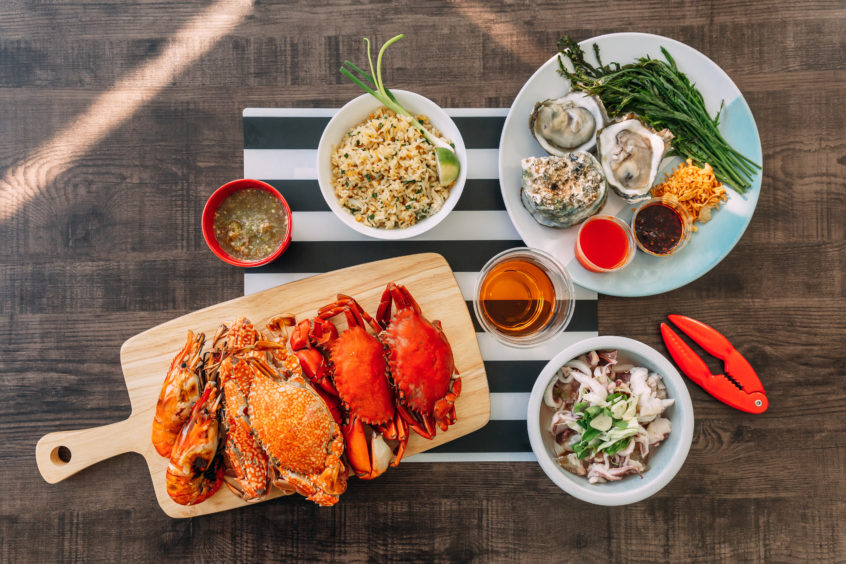
Meanwhile, Marie-Clare James, sales and marketing manager at George Campbell and Sons in Perth says that crab is still having its moment in the sun.
“For crab, prime availability time in Scotland is from May through to September. But I think it’s gone up in popularity recently. A lot of chefs use it instead of lobster as it’s more cost effective and has two different types of meat on it.
“We use crab meat in a lot of different ways, we sometimes use it in fishcakes, the claw meat can be used in salads or a light pasta sauce.
“It’s a great ingredient if you want a depth of flavour. The brown meat will give you a creamier, more intense flavour. But if you’re wanting something lighter, like a salad, then we’d recommend using the claw meat.
“There is a bit of a difference between the male and female crabs. The males are flatter underneath and have bigger claws, and you’ll get more white meat from the males. The females have more brown meat.”
With many fishmongers appealing to the public to step in and buy more seafood, Marie-Clare can only see the positives.
“I’m hoping that one thing that does come out of lockdown is that people reconnect with seafood a bit more and look at using ingredients they’ve maybe never used before rather than going straight to buying straight off the shelves. Hopefully that’s something positive that comes out of it.
“I feel for a long time, people in Scotland have been championing local, seasonal food, but I’m hoping that movement will gain a little bit of traction again as I feel a lot of people have moved away from eating fresh fish, particularly during lockdown.”
Recipes
The Seafood Shack’s Crab Cakes
(Serves 4)
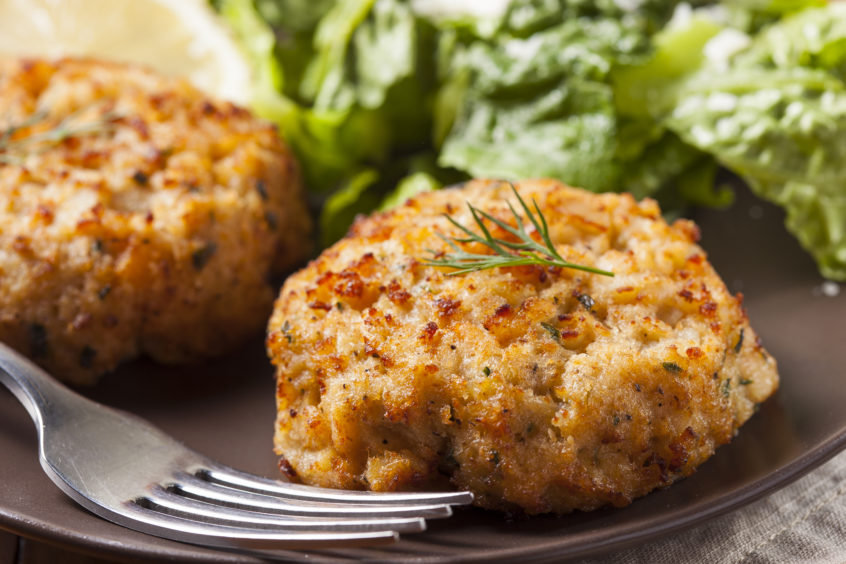
Ingredients:
For the fish cakes:
- Approximately 400g of white crab meat, picked and sieved for any shell (we use the white meat but if you have it then mix some of the brown meat too)
- 400g white potatoes
- Juice and zest of 1 lime
- 1 fish or vegetable stock cube
- ½ bunch of spring onions, sliced
- ½ red chilli, thinly sliced
- ½ tbsp of parsley, chopped
- ½ tbsp of chives, chopped
- 1 cup of plain flour
- 2 free range eggs, whisked
- Vegetable oil
- Salt and pepper
For the breadcrumbs:
- 4 slices white bread
- ½ tbsp of parsley chopped
- ½ tbsp dill, chopped
- Zest of 1 lime
- Salt and pepper
Method:
- To cook crab cakes, we deep fry ours but you can easy pan fry them if you don’t have the equipment to deep fry them. If you are deep frying your crab cakes then heat the vegetable oil to 180°C in a large pan or deep fat fryer, if you are doing this in a pan then be careful and heat it slowly – you need to be able to submerge at least one crab cake.
- Peel and chop your potatoes into large chunks, put into a pan covered with cold water. Add two pinches of salt, boil and then simmer until soft.
- Once the potatoes have boiled, drain them and let them steam dry.
- Put your stock cube in a small mug and cover it just with boiling water, mix it until it dissolves into a runny paste.
- Now get your potatoes, add your stock paste and mash them. Once there are no lumps add your crab meat, herbs, spring onions, chilli, lime juice and zest. Mix it all together until it completely combined, taste, season and add more of anything if you’d like.
- Now to make the breadcrumbs – put all your ingredients into a food processor and whizz until you have a fine texture.
- Place your flour, whisked eggs and breadcrumbs into individual bowls and season each bowl, roll the crab cakes into balls, dip them into the plain flour, whisked eggs and then breadcrumbs, make sure each section is done properly and they are fully coated.
- Now to cook your crab cakes, if you are deep frying them place your crab cakes in the vegetable oil and cook until the breadcrumbs goes crispy and the crab cake starts to float, this normally takes around 5 minutes. Be very careful as your oil will be very hot, remove them with a slotted metal spoon and drain on kitchen roll.
- If you are pan frying them, heat a small amount of vegetable oi and fry your crab cakes for around 5 minutes on each side, until crispy, be careful not to burn them. These are so good served with a sweet chilli mayo, green salad and a herb couscous.
George Campbell and Sons’ Crab Linguine
(serves 4)
Ingredients
- 1 packet of fresh or dried linguine
- 3 tbsp of rapeseed or olive oil
- 2 cloves of garlic, chopped
- 1 red chilli, deseeded and chopped
- Grated rind of 1 lemon
- 400g crab meat
- 1 tsp of capers, drained and rinsed
- 200ml of single cream
- 1 tbsp of lemon juice
- 2 tbsp of chives/parsley to garnish
Method
- Cook the pasta according to the instructions on the packet until it is al dente; still has a little bite.
- Heat the oil in a heavy based frying pan and gently fry the garlic chilli and lemon rind for three to four minutes until softened but not browned.
- Add the crab meat, capers, lemon juice and cream and simmer for one to two minutes to heat through. Season with a couple of twists of freshly milled black pepper.
- Put the pasta into slightly warmed serving bowls and put the crab mixture on top, sprinkle with chives to garnish.
